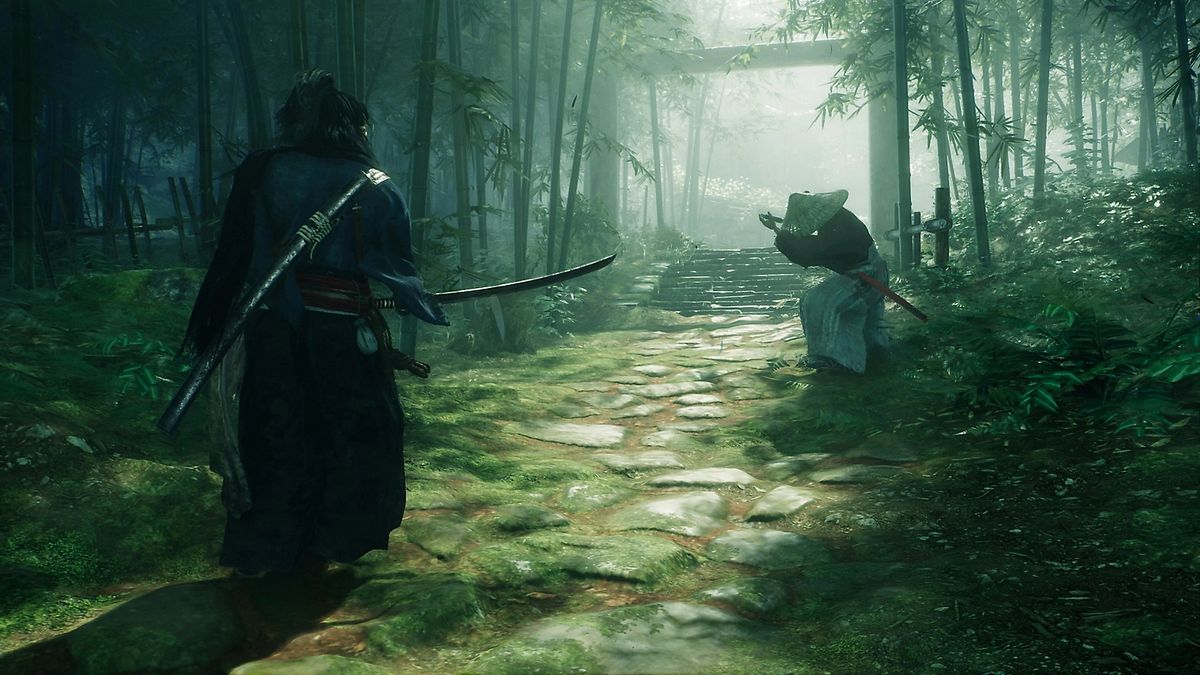Products You May Like
Review info
Platform reviewed: PS5
Available on: PS5
Release date: March 22, 2024
Perfectly countering any enemy’s attack in Rise of the Ronin is one of the most satisfying bits of video game combat I’ve experienced in months. The shimmer and crescendo of the violent impact of blade on blade, and the stagger of your enemy that follows; it’s all incredibly fulfilling, and immensely moreish.
Such combat thrills are at the center of this open-world action role-playing game (RPG) from Koei Tecmo and Team Ninja. The PlayStation 5 exclusive transports players to 19th-century Japan as it goes through the final years of the Edo period, Japan’s reopening to Western influences and the subsequent Boshin War. It’s a compelling choice of setting and makes for an intriguing and interesting backdrop for the adventure of the protagonist you play as: a Blade Twin, one of a pair of highly skilled assassins.
All in, Rise of the Ronin scratches the open-world itch. There’s a vast amount to do in each of the PS5 game’s regions, an interesting narrative is woven throughout, and it’s a Samurai-tastic adventure for those looking for something similar to Ghost of Tsushima or (maybe) the upcoming Assassin’s Creed Red. However, it is a little rough around the edges, gets repetitive in parts, and can’t seem to work out what kind of game it actually wants to be at points.
Learning the ways
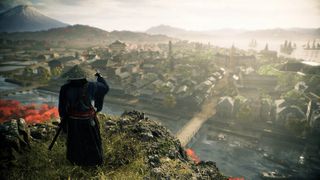
It’s the aforementioned combat that really shines throughout Ronin’s adventure. Countersparks are the star of the show. These moves are well-timed block-counters to enemy attacks and never get old. That’s quite the feat given their crucial nature to each and every fight with all enemy types.
Complementing the basic moves of attack, block, and dodge, countersparks are used to reduce enemies’ Ki levels (stamina, in practical application), but they will reduce your own in the process. These are solid foundations for your combat moveset, but combat grows into a multi-faceted beast beyond this.
There are different stances to master (giving me strong Ghost of Tsushima vibes); special Martial Skills that can unleash devastating attacks on baddies; a variety of close combat weapons to grow proficiency in; and ranged weaponry from excellent shurikens to powerful rifles, and you have a fulsome set of ways to inflict pain. This versatile mix leads to combat that rarely dulls, and it’s really enjoyable building a particular style and learning to nail every move.
As you level up your character, you’ll be able to develop all these further by investing in various elements of a robust skill tree that’s centered around four classic core elements of role-playing character-building: strength, dexterity, intelligence, and charm. I did find that once I’d slipped into a preferred playthrough, a lot of the skills just didn’t appeal or were relevant to my style and my effective combat, but the amount there is welcome, and you can respec at any time given you have a specific item.
The old informing the new

Team Ninja has kept some of its soulslike game elements from its Nioh series in Rise of the Ronin. Banners are quasi-bonfires, giving you save points and fast travel locations – that also respawn enemies and top up your health; and your character’s health items and ammo are limited consumables which can be refilled by touching a banner. It feels quite like Star Wars Jedi: Survivor or Atlas Fallen in this respect, a kind of ‘souls-lite’.
It’s a different kind of adventure to Nioh, crucially, in both its open-world offering, and in its action – the latter can be challenging, yes, but aside from boss fights’ spiking difficulty occasionally, this adventure is overall much more accessible (and can be altered across three difficulty levels).
More broadly on the action front, Rise of the Ronin seems to aspire to offer both hack-and-slash combat, as well as stealthy assassination-type sleuthing. While the former thrives for all the aforementioned reasons, I often found the stealth to never be as strong. It never felt like I could truly stealth my way through an entire outpost, with guards noticing your takedowns from a distance, or headshots with a bow not quite being effective enough. Plus, when formidable or stronger enemies can simply withstand an assassination attack, all hell can quickly break loose. As a result, it feels like Rise of the Ronin is trying to have its cake and eat it: wanting to offer a means to be stealthy, while always guiding events toward all-out action. At best, this makes it a little inconsistent, but at worst, the game’s identity is harder to see and appreciate with the two elements never truly wedding neatly.
Guns, gliders, and grappling hooks
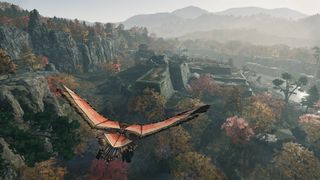
Traversing the world of Rise of the Ronin is one of the highlights too. You get a glider and grappling hook early in the game, and both are crucial to getting around the city of Yokohama and all the regions of Rise of the Ronin. Both are exquisite and a huge amount of fun. As well as giving you quicker means of travel, both look cool and can be used to either get the drop on enemies or incorporate them into attacks.
The game’s setting of 19th-century Japan is undoubtedly an interesting one that many folks will be familiar with. Exploring the world and seeing Western influences encroach on the traditional Japanese way of life, while said traditions battle to stay relevant is intriguing. It’s like a modern-day Way of the Samurai, albeit much longer and with much less obtuseness.
Importantly, the setting and world are deployed in such a way that there’s just so much to do. There are guard outposts to clear in aid of returning order to a district, side quests to complete, cats to collect (yes, you read that right), landmarks to visit and photograph, shrines to pray at, and more loot and upgrade materials to pick up and find than you can poke a stick at.
Best Bit
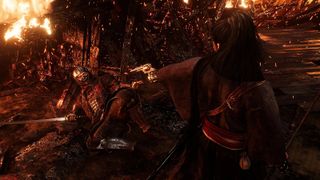
Each perfectly executed counterspark, be it against a regular enemy or a boss, was a thrill and felt incredibly satisfying. Not only did it weaken the resolve of the enemy but was a demonstration, with tangible benefits, that I’d successfully learned and adapted to an enemy’s combat moveset.
You’ll also meet a whole host of allies along the way. A further kind of mission type comes from this supporting cast in the form of Bond missions, which enable you to, well, strengthen your bond with them. These allies can join you in combat and offer in-battle bonuses, while they’ll also help you navigate the narrative and attempt to draw you one way or another along the anti- or pro-shogunate routes, providing interesting outlets and conversations through your journey.
It’s worth mentioning here that the game’s ‘bi-directional’ narrative and how it navigates, presents, and deploys the pro and anti-shogunate story is well done. Each branch can take you in different directions, and the choices you might are not just aesthetic: they make a genuine difference to you, your missions, and your allies – some characters will live and die as a result of the course you take.
The game’s open-world offering is filled with stuff to do and will scratch the itch for those looking for a world to checklist their way through. It’s borderline bloat-y but is often manageable, and its world and map retains an allure of exploration and completion.
As a result, the relative linearity of the main story missions should be welcome. However, these main missions do become rather samey and repetitive: drop into an area, fight your way past regular enemies on your way to a mission marker, and fight a boss at the end. This structure rarely deviates, so doing a few of the main missions in a row to progress the story can become tiresome.
Rough and ready
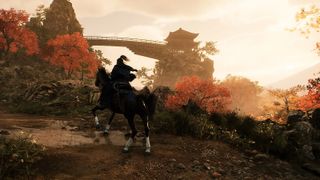
While the game’s world, on the whole, looks authentic and uses broad brush strokes of landscape type, color, and so on to bring the setting to life, it’s not all smooth sailing graphically.
Character models, animations, and combat moves look excellent. When you’re in tighter environments, everything looks terrific too. However, the environments of the open world take a hit and there is severe pop-in of elements and features that occurs not in the far distance, but very obviously in the fore- and mid-ground too, to the point that it is distracting. As the game’s combat almost demands you use the performance graphics setting due to its fast-paced, quick-reaction nature – it really is the best to play the game with – this exacerbates the pop-in even further than the other modes.
Graphical gripes aside, Rise of the Ronin is a robust open-world adventure game that will provide you with hours and hours of enjoyment, even if none of them really feel like anything new or fresh. It might not be the most unique, blistering, or bombastic – or crispest-looking – PS5 exclusive, but its best elements of a content-rich world and slick and crunchy combat have kept me in the game, mopping up outposts, completing bond missions, and collecting cats, after rolling the credits.
Accessibility
Rise of the Ronin has a decent range of accessibility options to tinker with. In terms of controls, players can change the input methods for some actions, choose from a few controller layouts, and have options to increase or decrease the amount of control assists for some moves. Vibration intensity can be altered, as can camera controls and language, and there is a range of subtitle options from backgrounds, sound effect captions, and changing the size of the text. However, there are no colorblind options which is a shame.
Should I play Rise of the Ronin?
Play it if…
Don’t play it if…
How we tested Rise of the Ronin
I spent just over 25 hours with Rise of the Ronin for review, playing on a launch-model PS5 with the game installed on the console’s internal storage. I completed the main storyline – which totaled about 15 hours in my playthrough – and spent the rest of my time soaking up the story and exploring a variety of all the different parts of the world.
I tested all of the game’s graphical settings (performance, quality, and ray-tracing), and found that performance was the best for enjoying that game and its best parts (the combat). I played Rise of the Ronin on a Samsung Q6F 4K QLED TV as well as on the PlayStation Portal and experienced that game’s audio with a Samsung soundbar, a SteelSeries Arctis Nova Pro Wireless headset, and the PlayStation Pulse Explore earbuds. The game’s audio was a joy through both soundbar and headset device.
